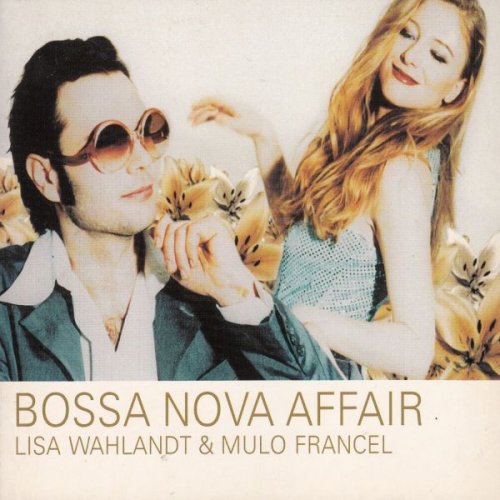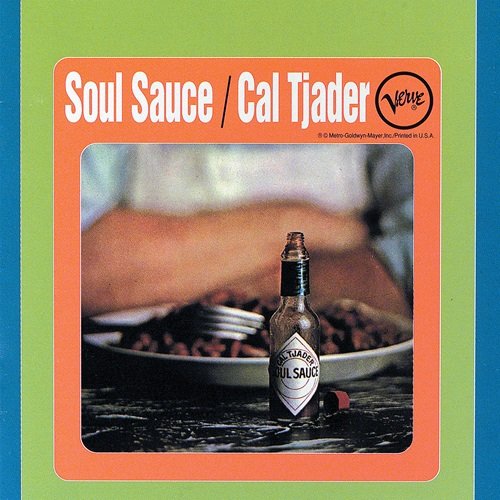La Grande Chapelle, Schola Antiqua, Angel Recasens - José de Nebra: Víspera de Confesores (2006)
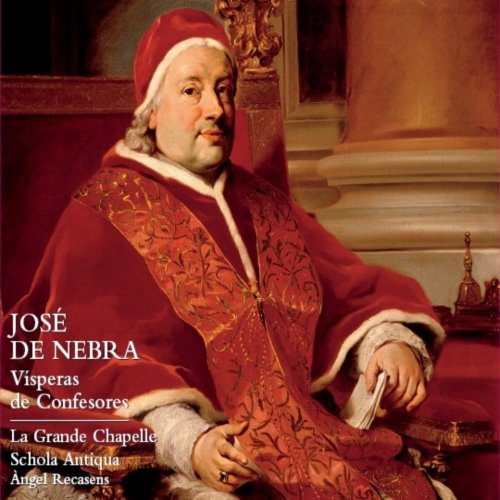
Artist: La Grande Chapelle, Schola Antiqua, Angel Recasens
Title: José de Nebra: Víspera de Confesores
Year Of Release: 2006
Label: Lauda Música
Genre: Classical
Quality: flac lossless (tracks) +Booklet
Total Time: 00:59:34
Total Size: 232 mb
WebSite: Album Preview
TracklistTitle: José de Nebra: Víspera de Confesores
Year Of Release: 2006
Label: Lauda Música
Genre: Classical
Quality: flac lossless (tracks) +Booklet
Total Time: 00:59:34
Total Size: 232 mb
WebSite: Album Preview
01. Entrada: Verso de Vísperas
02. Invocación Inicial: Deus in adiutorium
03. Antífona I: Dixit domine quinque talenta-Salmo I: dixit dominus domino meo
04. Antífona II: Euge serve bone-Salmo II: Confitebor tibi, domine
05. Antífona III: Fidelis servus et prudens-Salmo III: Beatus vir
06. Antífona IV: Beatus ille servus-Salmo IV: Laudate pueri dominum
07. Antífona V: Vestri capilli-Salmo V: Laudate Dominum
08. Himno: Iste confessor (More Hispano)
09. Antífona del Magnificat: Hic vir despiciens Magnificat
10. Benedicamus Domino
11. Salmo: Credidi
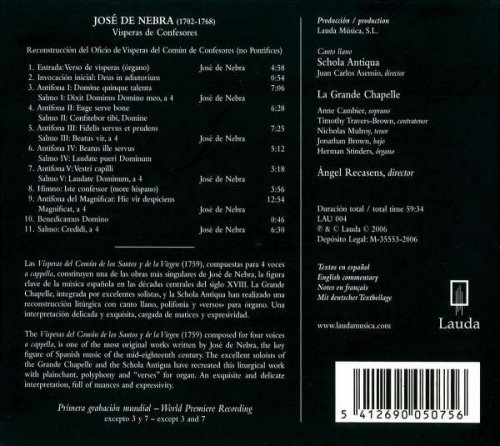
José de Nebra (1702-1768) is, without a doubt, the most important figure of Spanish music of the mid-eighteenth century. He worked at the Royal Chapel, where he was named first organist, and then vicemaestro in 1751. Starting in the 1720´s, Nebra composed many zarzuelas for the theatres of Madrid, and was also well-regarded as a teacher.
As a consequence of the fire at the Alcázar of Madrid in 1734 that all but destroyed the music archives of the Royal Chapel, Nebra was able to focus on sacred music, which in keeping with the period were written primarily for a double choir and instrumental accompaniment. In this context, the Vísperas del Común de los Santos y de la Virgen (1759), written a cappella in only four parts, is unique. The Vísperas is a collection of psalms and a Magnificat composed for the office of vespers. Nebra had the work copied, richly bound, and sent to the most important cathedrals of Spain, and to the Sistine Chapel as well.
On this occasion, La Grande Chapelle and the Schola Antiqua have reconstructed one of the possible offices, that of the Vespers for the Common of Confessors (not Popes). In addition to the structural elements of the liturgy, the psalmody responds to the practice of alternatim between plainchant, polyphony and “verses” for organ. All of the music for this first world recording is unpublished and comes from the archives of the Royal Palace, Santiago de Compostela and the Escorial.
In composing the vespers, Nebra deliberately employed a traditionally austere style, in contrast to the rest of his oeuvre. On the whole, the serenity, bareness and beauty of the melodic lines prevail.
The interpretation of La Grande Chapelle is especially attractive for its impeccable transparency of line and wide array of nuances. The search for expressiveness together with an absolute respect of the content of the text, the balance and tidiness all bear the seal of Àngel Recasens. The exquisiteness and delicacy of this version are an awesome revelation of one of the geniuses of eighteenth-century Spain.
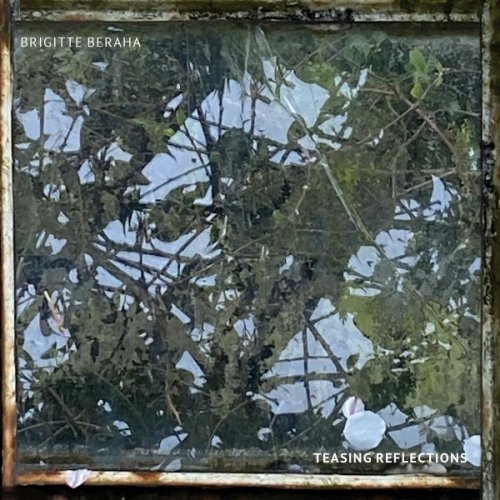
![Jakob Bro and Midori Takada - あなたに出会うまで – Until I Met You (2025) [Hi-Res] Jakob Bro and Midori Takada - あなたに出会うまで – Until I Met You (2025) [Hi-Res]](https://www.dibpic.com/uploads/posts/2025-09/1757926634_cover.jpg)
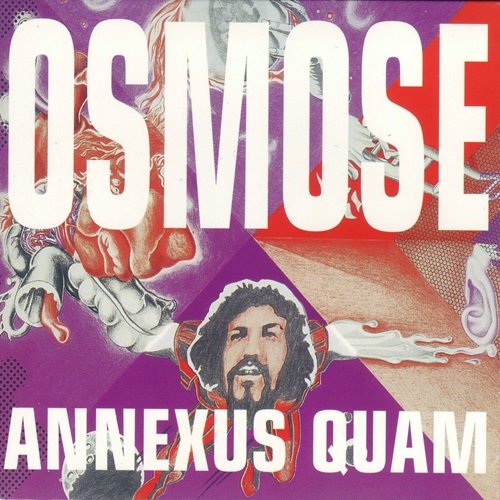

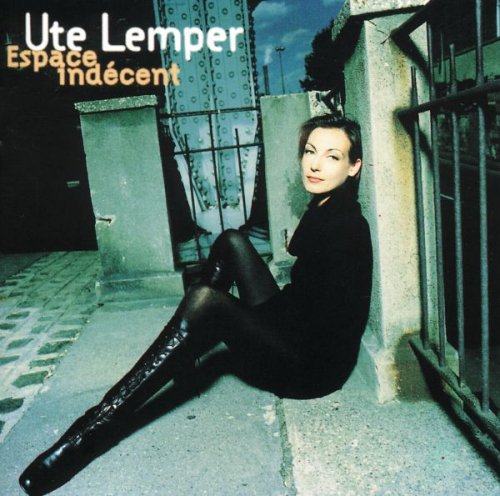

![Renato Carosone et son orchestre - Carosello carosone, no. 5 (Mono version) (2014) [Hi-Res] Renato Carosone et son orchestre - Carosello carosone, no. 5 (Mono version) (2014) [Hi-Res]](https://www.dibpic.com/uploads/posts/2025-09/1757779979_c5f07f0c13b254b937394d05f2daa8b2.jpg)
